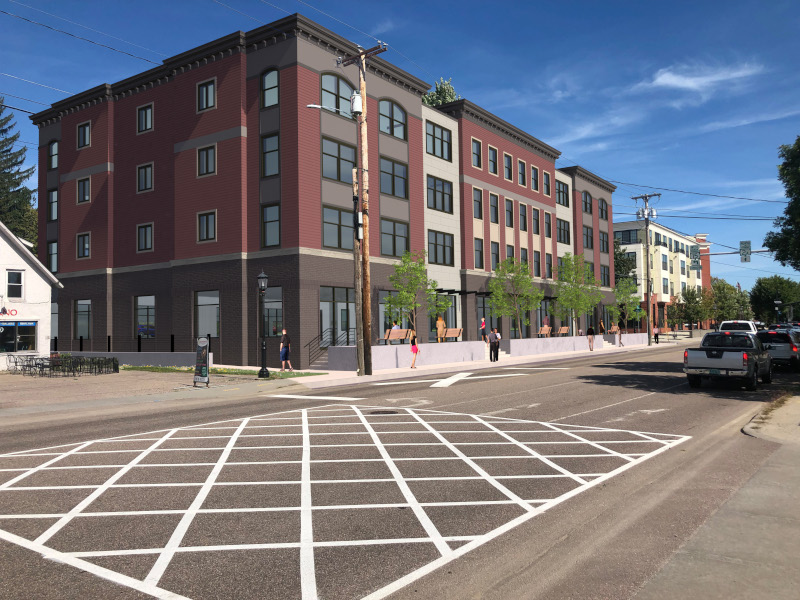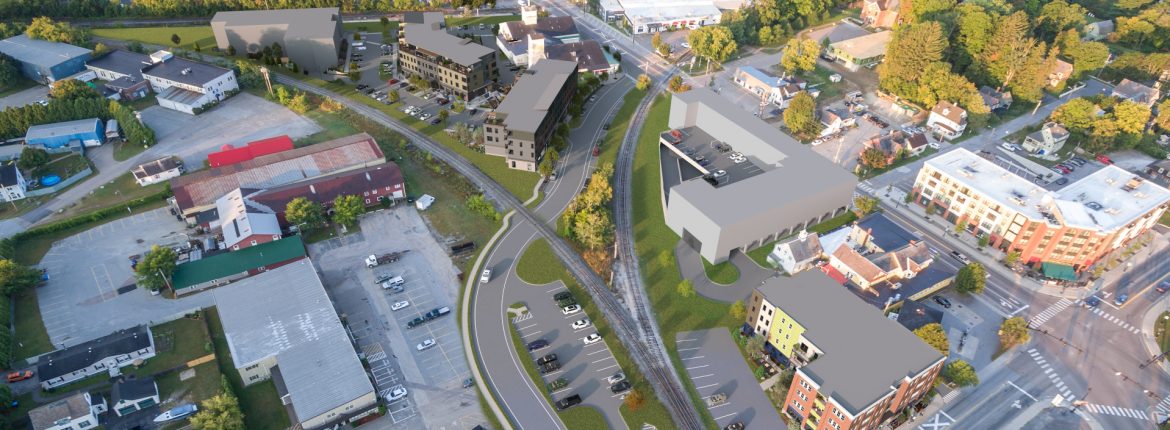Town of Essex & Essex Junction, Vermont
Finding a common path for the future
Business View Magazine interviews representatives of Essex and Essex Junction, Vermont for our focus on Economic Development in U.S. Towns & Cities
In the heart of Chittenden County, Vermont, just north of the Winooski River, lies an offbeat municipality scenario with both a village and a town government. Five Selectboard Members oversee the town of Essex as a whole, including 33 additional square miles of suburbs and farmland, while five Trustees govern the village of Essex Junction, where nearly half the town’s population lives. Each government does its own planning and zoning. They share the same school district, but each operates its own fire department and library. Each has its own taxing authority. And on March 2, 2021, the town and village residents will vote on whether to adopt the Plan for Merger and the proposed Charter for merged communities.
“Over the course of decades, we’ve debated about whether to merge or separate, divide or consolidate in some way,” says Elaine Haney, Chair of the Essex Town Selectboard. “There’s always been contention about a merger due to taxation issues.” Given the complications that can arise when managing two municipalities under the banner of one community, most Vermont towns have done away with their villages. It’s why half of the state’s 76 previously incorporated villages have since merged, been dissolved, or have separated from their associated town. The upcoming vote will represent Essex Junction’s 19th attempt at joining that statistic since 1958.

Essex Junction was formed in 1892 to give “downtown” services (sidewalks, water, and sewers) to the villagers; services that residents in the rural areas didn’t need or want to pay for. As both town and village grew, the territorial divide led to some duplication, but it also created tangled linkages, such as Essex’s shared police department, which upholds different rules and ordinances on behalf of each municipality.
“What we’re anticipating, should merger pass, is the ability to have one development code and a unified vision moving forward,” says Haney. “Each region – the town and the village – have their own comprehensive plans, with specific details about how the town and village centers are to grow. Those aren’t going to change; they’re just going to be devised under a single plan. We can maintain the density where the density is, build the density in the town where it’s able to be built, and leave everything else to be rural, which is the character that our residents prefer.”
“The village center faces the same kinds of challenges that little old downtowns around New England all have – a lot of constrained property lines, criss-crossing boundaries, and lots of dense traffic,” says George Tyler, Vice President of the Essex Junction Board of Trustees. “The important thing would be for the town and the village to work more closely together in terms of economic development. Because the fact of the matter is, whether we like it or not, we’re in a very competitive environment in Chittenden County. We’re competing with Burlington, South Burlington, and Williston for investment dollars.”
Tyler says he’s been committed to the merger since 2014, when IBM Microelectronics – Essex’s largest employer at the time, at around 4,000 employees – started shedding jobs at its microchip manufacturing facility, sparking rumors of a plant shutdown. “IBM was in the village, but it benefited the town as well,” Tyler explains. “The Chair of the Town Selectboard and I worked very closely together because we understood the gravity of the situation; if all those jobs were lost, what it was going to mean for the community. We did a lot of hand wringing. We called a lot of meetings with state officials, non-profits, and IBM people. Thankfully, GlobalFoundries took over at the very last minute, but that taught me the absolute necessity for the village and the town to approach economic development from a united front.”
GlobalFoundries, a privately held, California-based multinational company, is Vermont’s largest private manufacturer, with 2,300 workers. Its “Fab 9” facility, the Essex Junction foundry, still prints microchips that power consumer and commercial electronics. “In the town, we’re fortunate to have light manufacturing and industrial areas, which is not super common for Chittenden County communities,” says Owiso Makuku, Community Development Director for the town of Essex. “We have companies like Blodgett Ovens, Gordini, Autumn Harp, and Revision. Glavel, whose product is a sustainable foam glass aggregate, will soon open its flagship manufacturing plant here.”
The town has also just completed an overhaul of its Master Plan for the town center in collaboration with the multi-disciplinary planning and consulting firm, SE Group. Building on the original 1991 Master Plan, the new “ETC Next” proposal foresees a future where the Town Center and now-rebranded Essex Experience (formerly the Essex Shoppes and Cinema) will have the groundwork laid for a denser, more walkable urban environment. Planning Commission members have already approved a new, 22,500-square-foot building for the Essex Experience location. Housing an immersive and interactive arts space playfully called “Babaroosa”, the venue will provide a big boost to the region’s creative economy. “It’s being modeled after the work of the Meow Wolf collective from Santa Fe, NM, but with a Vermont flavor and approach,” Makuku says. “It’s going to be about a $25 million investment.”

From a housing perspective, Essex values both its urban and rural components and would like to see balanced future growth, with an appropriate range and mix of housing types and densities. “We just jointly formed our community’s first Housing Commission,” says Haney. “They’re in the education and assessment phase right now, but the goal is for us to be in concert in terms of what kinds of housing needs to go where. Chittenden County itself has a housing goal of 3000 units by 2025. All that housing shouldn’t just be happening in Essex. It should be spread across the county but we have a vision for what needs to happen.”
Champlain Housing Trust (CHT), a local housing non-profit, is helping them get there. “We have more affordable housing with a capital ‘A’ now because of the CHT,” Haney says. “We overlapped the village center area with a neighborhood designation, which incentivizes developers to provide affordable housing as part of their proposal,” adds Robin Pierce, Community Development Director for Essex Junction. “One of the Chittenden Crossing buildings is actually being developed in unison with the CHT. It’s all going to be affordable housing.”
Essex Junction’s famous Five Corners intersection marks the site of the Chittenden Crossing project, a pedestrian-friendly, five-building, multi-use complex with 225 new apartment units and 29,600 square feet of commercial/retail space. “There’s a new road, the Crescent Connector bypass, which is going to reduce congestion at the Five Corners,” notes Pierce. “We also have a new crossing across the Amtrak main line. That’s sort of what inspired the name ‘Chittenden Crossing’.” The village center’s Amtrak station is the busiest train station in Vermont. It’s also the closest one to Burlington – the state’s most populous municipality. “We’ve been through a charette design process to come up with a new design for Essex Junction station,” Pierce says. “It’s currently being reviewed by some of the representatives from Vermont, who are in Congress to see if they can obtain some funding for us.”
In addition to growing residential density and improving accessibility in the village’s downtown, the Chittenden Crossing development could solve some significant environmental issues. “The land that Chittenden Crossing will be built on is just a massive, expansive stretch of asphalt, all of which causes stormwater runoff, which we have to deal with,” Tyler explains. “When you get a new development like that on pre-existing asphalt, it comes with a really good stormwater plan. We can over-build stormwater capacity. There’s all kinds of good things besides more places for apartments and more economic activity.”
“Also, with our new town center plan, we’re focused on building the density without going beyond the capacity of our sewer core, and without breaking the boundaries of where our open space is preserved,” says Haney. “Our community is deeply attached to a lot of the open spaces we have, so we want to make the best of those areas where we can develop. We have to be very thoughtful about it.”
“There’s a real way for the town and the village to complement each other in terms of the development to go after, and the development they’ve already approved” adds Pierce. “For the first time in a long time, the village center is vibrant at night. And the town has the space for industrial, manufacturing, and commercial. They’re beefing up their downtown as well. It’s going to be like two ends of a barbell, where we have the New Town Center and the Old Town Center, compact settlements in the village, and single-family homes in the town. All with enough space to provide for incoming businesses.”
Irrespective of the outcome of the March 2 vote, the Selectboard members and Trustees are confident in Essex’s ability to support a quality of life between the town and the village that will be highly desirable, both for living and for the local economy.
AT A GLANCE
Town of Essex & Village of Essex Junction, Vermont
What: Unique town and village planning to merge their communities
Where: Chittenden County, VT
Websites: www.essexvt.org www.essexjunction.org
PREFERRED VENDORS
O’Leary-Burke Civil Associates, PLC – obca@olearyburke.com



